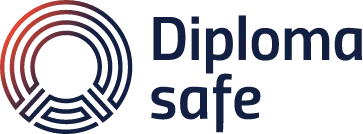In this interview, CEO Mikkel Egehave and CTO Peter Lind Damkjær from the Danish company Diplomasafe tell about how NFTs might change the future of the diploma issuance landscape.
Michael Juul Rugaard (MJR), The Tokenizer: To begin with, I would like to know what Diplomasafe is?
Mikkel Egehave (ME): Diplomasafe is a platform that universities and other educational institutions can use when transitioning diplomas from paper to digital copies. We live in an increasingly digitised world; we increasingly replace paper documents with digital versions of documents, including diplomas. And we need to be able to trust these digital documents. So that’s the main reason why we built Diplomasafe. We want to establish trust and create efficient ways to issue digital diplomas.
At the moment, we’re based in Copenhagen, Denmark, but our scope is Europe. We have customers in 25 countries, and most of our customers are in the UK, Holland, and the Nordics. About 80% of the customers are trainee companies, and 20% are universities.
MJR: Can you summarise what value you are creating for your customers? Is your primary goal to get rid of paper and save time and money through more efficient digital processes for both the educational institutions and the students?

ME: Well, three parties benefit from the digitisation of diplomas.
The first is the issuing part which is the educational institution. For them, it’s a cumbersome process to produce a transcript or diploma because it needs to be signed and sealed. Some examples show that issuing one diploma or certificate costs 50 to 60 euros. So in that regard, there is a high cost for institutions like universities to issue diplomas. People also lose their paper diplomas, and they have to get new ones. This re-issuing process is a lot easier with a digital version – also if a mistake is found in a diploma, like a misspelling of a name. So, for the institutions, a digital version of the diplomas saves time and money.
The second group who are benefiting are the students. You get a piece of paper when you graduate, and to use this paper, you have to scan it or take a photo of it if you want to add it to a job application or use it in an admission process for a new university. All of that will be easier if the diplomas are digital. It’ll be easy to trust that the diploma states the right things. We are working on a solution that will make the diplomas connect to social media such as LinkedIn and Facebook so that people can use them for their online avatars and their personas on the internet.
The last category is the educational institutions that receive the issued diplomas. They need to have trust in these diplomas. They need to trust other institutions that issue the grades to the students.
Today with the paper diplomas, the applicants write an email with the diploma document attached to show that the educational background stated in their CV is accurate. The educational institution then checks if things are accurate. This cumbersome procedure is needed because there’s a lot of fraud with diplomas. It’s super easy to claim you are something that you’re not. And we have seen examples of actual factories with 3000 people employed producing fake diplomas from educational institutions like universities worldwide. They use the correct layouts, and everything looks authentic. And a third party will have difficulty figuring out if it’s a fake.
The fake diploma industry is estimated to have yearly revenue of about $2 billion. But we don’t talk about this because it’s inconvenient. We like to trust people, especially in the Nordics. But in the UK and the USA, background checks have become a big business because you don’t hire anybody in a specialist position or management position without a background check on work history and educational background.
MRJ: You have already taken the first step from paper to digitisation, so why are NFTs and blockchain technology relevant?
Peter Lind Damkjær (PLD): Being able to timestamp the diplomas on a blockchain is a way to create trust. Also, NFTs will enable the use of diplomas in the digital world. On our platform, we use the data as it is stored. Our competitors are very PDF centric or are very centric on certain blockchain implementations. Our idea is that we don’t want to decide which format to use; we want to be format agnostic. We want to support various formats and trust models to let the market decide which is dominant. Some formats might be prevalent in some contexts, whereas others might be valuable in other contexts.
If you look at small companies that want to hire people, the PDF is often a good choice. Whereas if you’re going to make efficient systems between universities, you need to have something more digital to extract the data easily. And in that case, it will be a format that includes metadata on how to interpret different information. Like where are the names and the grades located and things like that? NFT would be a format on the shelves that would enable us to enforce a very high-level trust model. In our use case, blockchain and NFTs would primarily be used for provenance purposes.
MJR: Sure, and the ability to prove the provenance of a digital file is exactly why NFTs suddenly became so highly interesting for artists working in the digital space, right?
PLD: Yes, that’s right.
MJR: How important is decentralisation in the Diplomasafe case?

PLD: One of the questions that we are asked is: If we have a centralised solution to Diplomasafe, what happens if Diplomasafe is merged with another company or if you close down your services and so forth. This was originally why we began making blockchain certificates because if we put integrity data on the blocks, it will give our customers more security.
Whether we exist or not and whether the customer exists in the future is essential. For example, a university might exist today, but will it be here tomorrow? We have discussed whether we should make a private blockchain, but this was just the overhead of a traditional database, so we didn’t see the benefits. The benefit of using a blockchain would be to use a public ledger that cannot be altered so that the diplomas will stay valid even when universities or companies shut down.
We cannot put the diploma itself on the blockchain due to GDPR, but the blockchain can be used to verify data, and it can be used to prove that a provided diploma is issued correctly.
MRJ: If a university issues a diploma as an NFT, the student will own the NFT, right?. So it’s completely independent of whether the university exists or not ten years down the road?
ME: Yes, this needs to be done following the trust model. So you need to know when the diploma was issued. Did we trust the university? Was this an actual organisation? And to this comes diplomas from so-called diploma mills. What wallet issued the diploma? Was it the university wallet or some strange unknown wallet and smart contract?
One needs to know who signed off for the diploma. The principal or dean typically signs the diploma, and this person’s digital signature is the key to proving that the program was passed.
MRJ: Let’s assume that you want to take the next step and try this out in practice. What would be the barriers to doing that?
ME: The concern within universities is that this is a public area. So anything that is not standardised or related to something that will hold up in court is something that they are not safe to implement. Universities often also represent a culture where if you don’t do anything, you get more praise than if you do something stupid.
So if NFTs turn out to be a success, we will probably first see them among other diploma issuers than the universities. The training organisations, for example, are issuing more certificates, they have shorter courses, and they need less public documentation of the diplomas. So they will most likely be more interested in taking the NFT lead.
Today, the training organisations’ graduates like to promote their diplomas on social media, and by doing so, they promote the training organisations as well. So if I share my diploma on LinkedIn, I’m promoting myself, but I’m also promoting the training organisation. And with NFTs, diplomas will probably be promoted even more, which will benefit all involved parties.
MRJ: So NFTs could have a cool factor on social media?
ME: Sure, they need to look super cool compared to what diplomas do today. And compared to today’s manual processes, the creation of NFT diplomas is super easy and inexpensive. And NFTs can certainly further enhance both the trust model and the efficiency of even today’s digital diplomas.
Read other stories: Towards tokenization of everything – and a new circular economy
Techno and Chill – A Web3 Music Marketplace Where Fans Meet Their Favorite Artists



